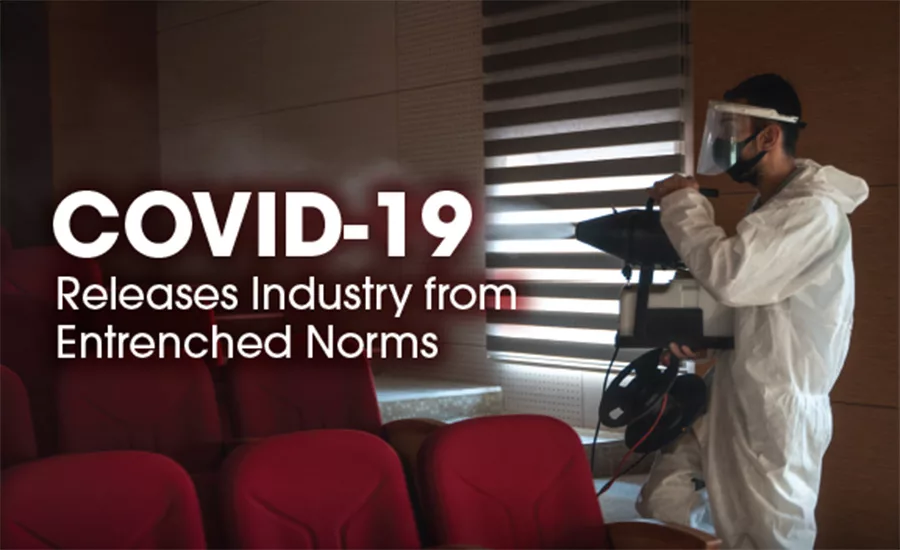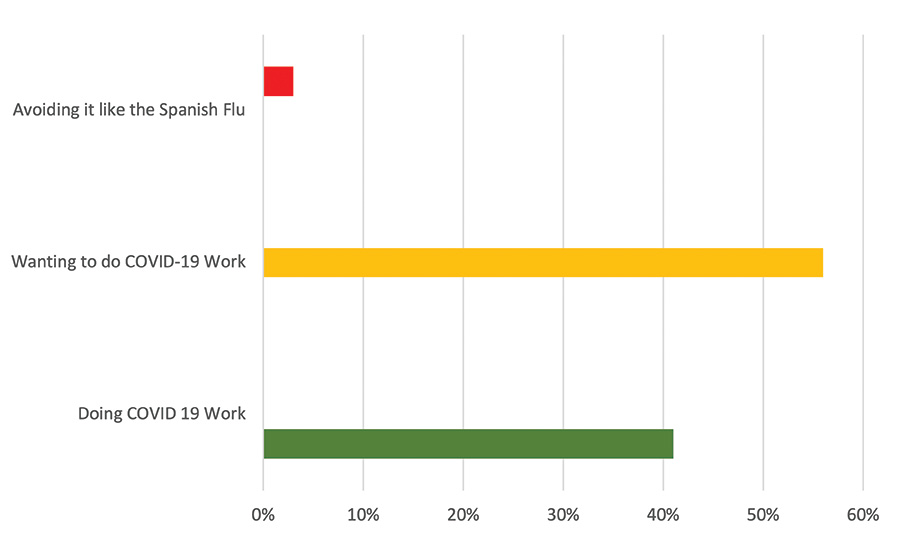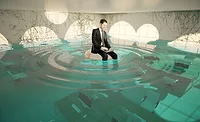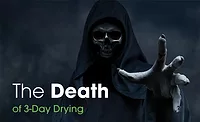COVID-19 Releases Industry from Entrenched Norms

From the beginning of March until now can only be described as a white-knuckle ride of unknowns, changing business practices, and challenges owners and employees had to face. This year has challenged every aspect of how flexible a business can be to adapt and overcome dramatic changes from extreme circumstances often beyond our control. Fortunately for many restorers, this comes as a blessing that launched business models into a more efficient world that can lead to increased profitability down the road.
What COVID-19 has done to our industry and society in general is revolutionize the need for technology to be effective and efficient, therefore reducing the reliance on entrenched and often antiquated norms.
The restoration industry has demonstrated its nimbleness and capability of changing processes faster than anyone would have predicted and with great success. An entire industry seemingly adjusted to the incoming pressure and readily accepted the new world we faced and are going to face in the coming months and potentially years.
I recently hosted a webinar and posed this question to about 100 viewers: “How many restorers are doing COVID-19 cleaning?” The results were amazing to see:
According to contractor feedback, many resisted COVID-19 jobs between March and June for four common reasons:
- Unsure of procedures to protect clients and staff.
- Not having remote workflows in place to reduce contact points with customers.
- Not sure how to charge or know profit margins for the work.
- Not sure if insured to do the work and how to limit liability.

Fear of the unknown is what held many restorers back. Offline, many told me they were concerned this would be a six to eight week challenge and did not want to invest in training for something they couldn’t capitalize on. After it became evident this will be a longer-term issue, the decisions to train and change became clear.
This hesitation was not just felt by the restoration industry, but all parts of the industry were suffering.
Increased Risk Holds Some Pros Back
Restorers are not the only ones in the industry who had their business models challenged by the pandemic. The insurance companies and independent adjusting firms immediately held back most of their staff from field visits. The recognition that they did not have the training, experience, and equipment to protect staff going into the field created uncertainty in their protocols and forced many to place restrictions in the business practices resulting in a large contingent of adjusters being furloughed.
What may not have been obvious before the pandemic became very apparent during the early stages that the adjusting professionals were less prepared for attending higher risk sites. This is mostly due to the lack of safety protocols, training, and experience tooling up and suiting up adjusters to deal with the increased levels of risk. Restorers knew about this limitation for years as many adjusters would arrive at contaminated or hazardous jobsites ill equipped to enter the properties.
We know insurance companies are experts in risk management and assessing risk. Therefore, it should be no surprise they reacted by realizing the most effective means of continuing their services to their clients was the utilizing of the restoration industry. Restoration contractors being used to safely gather the information, document it, and provide a clear picture to the carrier demonstrates the specialized skills of the restorer.
When smaller losses occur now, the restoration and insurance industries utilize digital tools to remote view their claims. In our company, we saw a dramatic spike in the utilization of these tools early in the pandemic to reduce risk and service more clients with fewer resources. Even now, as most places are opening up, the use of digital tools has continued to increase as an action step to deal with risk management.
The size of the insurance organizations also created barriers that slowed adoption of the digital processes to conduct remote site visits, using remote workflows, and digital tools while trying overhaul their traditional infrastructure setups.
Considering all these barriers in place for the carriers, the speed at which some insurance companies and independent adjusting firms have accepted the challenge and adopted technology into their workflow is very impressive. The carriers who implement the right technology now and train through this pandemic will have a distinct advantage over their competition post-pandemic.

Technology Increases Restorer’s Value
These inefficient processes that have become entrenched norms over time are the greatest opportunities to maximize efficiency and profitability for the contractor. The industry is implementing remote workflows that allow capturing photos, videos, and information at a pace that is unprecedented. Contractors are focused on reducing their touch points (phones, documents) with clients when it comes to signing documents, and close proximity interactions. Restoration contractors have been able to up their value to the industry and change the efficiency of how work is done at the same time. It is obvious that the contractor cannot stop attending job sites, but the contractor can dramatically reduce the field staff and client contact touch points that stem from traditional workflows.
A main fear of restorers was the increased risk of catching COVID-19 from customers (and/or passing it on) because restoration companies are people-driven businesses. By limiting touchpoints, it allows the restorer to remain at or increase capacity with a healthy staff, and the customer still receives great communication but in a more socially distant way.

Digital Workflows Will Improve the Industry
The next 12 to 24 months will be an opportunity for restorers to take back their businesses and rebuild their processes to meet their needs. COVID-19 has opened the restoration industry to doing business with non-insurance customers, which is good for growing your business model. Implementing systems that work to drive efficiency and reduce your liabilities and risk are keys to tomorrow’s way of life.
Here is some advice for those of you who fear digital tools or changing to a more efficient system. Find a system that fits you and your staff that will deliver immediate positive gains to your customers and reduce the time it takes your staff to deliver that improvement. Look for ease of use that will allow you to implement the system remotely so that your staff can get trained in an unconventional setting.
Restorers who find people reverting to their old ways experience this for two main reasons. The first and most common is that the new processes are not efficient and the savings in time and energy does not offset the increased complexity that the new system has created, therefore the old tried and true system is the preferred system. The second reason is that the digital processes do not match the actions and steps that take place in the field.
A Quick Prediction
While COVID-19 will go away eventually, the learned behavior of the population will create subconscious and conscious decision making amongst everyone. Today as you walk down the street or aisle, you make an effort to create distance between you and the other person. You would never have thought twice about it pre-COVID, yet today you move and expect the other person to move. When someone gets too close to you and fails to respect your personal space, it is considered more offensive than pre-COVID.
Think about those businesses who will choose to not evolve and change their processes into a safer way of working that may be everything technically correct. The perception will be there is something not right about the experience because expectations of the customer will change.
How will your business leave the entrenched norms behind and evolve into a more efficient and profitable business?
Looking for a reprint of this article?
From high-res PDFs to custom plaques, order your copy today!





